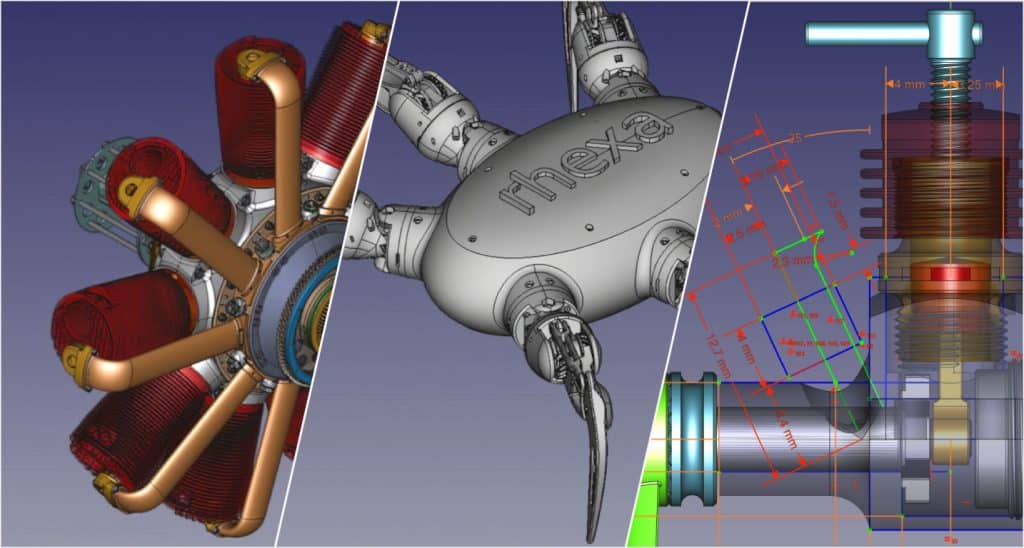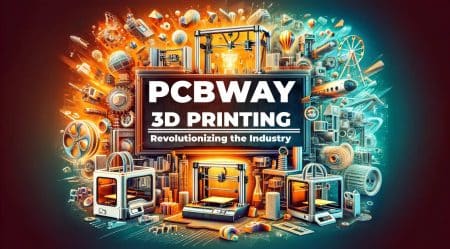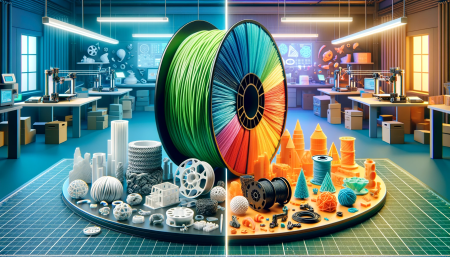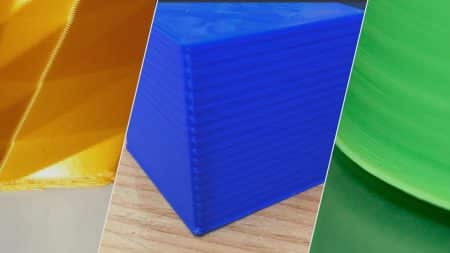Table of Contents
A 3D model must first go to a slicer in 3D printing before being sent to the printer. There are websites like Thingiverse where you can download various 3D models. But you’ll need modeling software if you want to build your models.
One of these 3D modeling programs, FreeCAD, was created by Jürgen Riegel, Werner Mayer, and Yorik van Havre. It is open-source and free. Let’s explore FreeCAD’s advantages and disadvantages!
One of the market’s most widely used modeling programs, it is currently available in version 0.20.1. The name suggests that FreeCAD is free and can be used to design objects of any size imaginable. Now, FreeCAD has more than 25,000 active community members using the forum alone to discuss the app’s difficulties and new features. Although the number of software downloads is unknown, it ought to be much higher. The software can be used for personal use, but it is particularly well-liked in the industrial and product design sectors. Both novice and experienced users can use it. It is a well-liked option in the 3D printing industry. However, this CAD software’s capabilities go beyond 3D modeling. You could use it for simulation, for instance.

FreeCAD is compatible with Windows, Linux, and Mac and supports various file formats, including STEP, IGES, STL, SVG, DEX, OBJ, IFC, and DAE. The fact that FreeCAD offers a lot of freedom makes it so adaptable. Several plugins can increase the capabilities of the software. Since there is such a wide variety of free plugins available, FreeCAD can be used to its full potential by various users, including designers, mechanics, architects, teachers, and even students.
Features of FreeCAD
2D sketches can be created using FreeCAD and then transformed into 3D models. The software is parametric, so the relationship between different elements and their individual properties can be changed. These elements’ ratios can be altered to produce highly complex structures. Additionally, the user always has access to the original sketches thanks to FreeCAD.
A 2D sketch that roughly depicts the final shape of the model is typically created before a 3D model is created using FreeCAD. The user-friendly interface enables a variety of views of the sketch. When the user places various points and connects them, this is produced. It is also possible to specify multiple connections between lines, such as their angles, and then change the size of those connections. The connections between the lines don’t change when the size does. The so-called “padding” process, in which a layer is placed over the sketch and its thickness is chosen by the user, converts the 2D model into a 3D model. A three-dimensional structure is produced from the sketch in a brief period.

The 3D model can then be modified by drilling holes and rotated in the same way as the 2D model. The sketch can then be saved in one of the many file formats offered, sent straight to a slicer like Cura, for instance, and printed. FreeCAD is incredibly user-friendly, among other things, because the user can always go back to the original sketch and make simple changes. This allows for creativity and the opportunity to try new things.
FreeCAD Benefits
What are its main advantages? FreeCad’s flexibility, ability to streamline the design process and user-friendly interface are its main advantages. FreeCAD makes the 3D design simpler to use and its processes more manageable when used as a personal tool or as a professional design solution. A distinct pattern of advantages can be drawn from using this software, even though the design space across industries has a vast and disparate set of requirements.
Flexible
FreeCAD can be scaled to include the required features, thanks to its modular design. Plugins allow for the extension of the functions. You can also use its Python Interpreter and external and macro scripts to customize and increase capabilities.
It makes the design process more manageable.
With the help of FreeCAD’s parametric model, you can create objects based on different models or special requirements. The Qt framework is used to build the graphical user interface. It has a model history feature that makes it easier to follow changes made to specifications. Additionally, it uses an Open Inventor-based 3D viewer to make it easier and faster for you to manage three-dimensional scenes.
Intuitive interface
Like AutoCAD, FreeCAD uses Open CASCADE technology to support complex design specifications for compound shapes like breps, surfaces, and nurbs. Thanks to the integrated Python Interpreter and open API, it is simple to manage the interface, geometry, and rendering. Workbenches and the customizable dashboard are logically arranged. Which tools to display is up to you.
Can FreeCAD be used commercially?
FreeCAD may be used for any objective, whether it be personal, professional, or academic. Any FreeCAD version may be installed and deployed anywhere, at any time. FreeCAD is also completely adaptable and modifiable for your personal needs.
Is FreeCAD totally free?
FreeCAD is free. It costs nothing to use. This free open-source software is compatible with Linux, macOS, and Windows.
What is FreeCAD used for?
FreeCAD provides tools for creating, exporting, and editing solid, full-precision models. You can also export your models for CNC machining or 3D printing.
Can FreeCAD be used for CNC?
From a FreeCAD 3D model, Path Workbench generates machine instructions for CNC machines. These utilize CNC mills, lathes, lasercutters, or other machines to create actual 3D objects in the real world. The language of instructions is typically G-code.
The official website has more details that you can find there. Click here to download FreeCad open-source 3D modeling software.
Are you using FreeCAD already? What models have you already created? If so?
Let us know in the comments below or on our Facebook page to let us know your ideas, and we would appreciate seeing pictures of your works of art!






